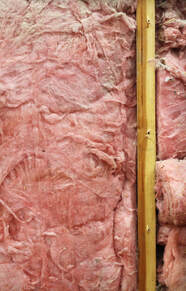|
Contributed by Truwin Windows, Doors, & Siding Insulation is a vital aspect of any home. It maintains the indoor heat during winter, while allowing less cool air to escape during the summer. Heat energy leaving your house or finding its way through raises utility costs and causes discomfort all year round. Ranging from cellulose, fiberglass to plastic spray foam, insulation ensures that your furnace or air conditioner sustains the right indoor temperature. As with any other energy efficiency topic, insulation is likewise clouded with myths and misconceptions. Listed below are the most common myths. Attic and Internal Wall Condensation Result from the Absence of Ventilation This is not entirely accurate. The right ventilation in a building may allow condensed water to escape the walls or the attics, but the lack of it is not entirely to blame for condensation. The major cause is air leakage during periods of the year where the air outside the building happens to be colder than the indoor air. The capacity of air to hold moisture together is proportional to the temperature. It means that when the air is too warm, a higher amount of moisture is held. Should warm indoor air find its way into the cavities of the wall or the attic spaces, it cools slowly and penetrates deeper into the building. Because the air is warm and moist, it leaks into the cavity of the wall and may encounter a sharp temperature gradient. With time, the air ends up losing its ability to hold the moisture leading to condensation and leaking. Condensation at this point occurs in the form of tiny droplets. The state where temperatures experience a drop leading to condensation is known as the dew point. Any amount of water in the wall cavities can lead to the development of mold. Ventilation in a building is vital, not only to deal with moisture, but also to prevent air leakage and condensation. R Values Reflect Real World Energy Performance Accurately R-value remains the most crucial metric in the evaluation of the thermal protection given by insulation. It is the only acceptable standard for measuring the effectiveness of insulation to retard heat transfer in Canada and the US. In fully metric countries, the other similar system used is RSI. Building inspectors, professional builders, and homeowners all depend on R values, given that there is no other number that can be used to measure the performance of insulation. The problem is this metric often changes depending on what is being measured. As determined in the labs, there is often a major difference between R values and the real-world energy performance delivered by different insulations. The lab analysis of R values presents significant issues considering that air movement is eliminated from the results. Any professional builder knows that air movement lowers the performance of insulation, and air currents and drafts occur within the attics and wall cavities. Any insulation product that hinders the flow of air within it gives higher insulation values than those that do allow. Vapor Barriers Trap Moisture
If you have noticed a clear vapor barrier clouded with moisture, you may believe this myth. A vapor barrier, however, is responsible for preventing the infiltration of warm and moist indoor air into fiber-type insulation. Should infiltration happen, the indoor air cools down and loses some of its capacity to trap moisture. Any moisture noticed within a vapor barrier may result from humidity getting into the wall cavity or a leaky vapor barrier. If the siding is leaky, it may also lead to this. However, it can also occur in leak-free basements. Because vapor barriers are significant in any insulation where air passes through, never be tempted to slash them if you notice moisture behind yours. A continuous and properly sealed vapor barrier is crucial for every warm side of walls containing air-porous insulation. The More Insulation, the Better While fabric first approach is highly valued, other details must be considered alongside the thickness of the insulation. In every building, air-tightness is as vital as the insulation itself. While installing insulation, an entire home approach must be taken to ensure that any defect that could lead to air leakage is addressed. It means that when installing doors and windows, draft-proofing (draught-proofing) must be considered. This will ensure that ventilation stays clear of debris. If you include the insulation in an old home, new insulation may need to be installed. This should address any gaps and cracks in the doors and the windows, among other parts of the building to minimize thermal bridging. Air leaks can be checked through blower door testing to determine the infiltration rate. Insulation is not meant to hinder air leakage, meaning that the effectiveness of the product being installed must be considered. Proper insulation is far more complicated than it looks. Unfortunately, many builders do not take the time to comprehend the reality and the physics of insulation. Aside from the fact that the building industry is hesitant to adopt change, energy efficiency and insulation dynamics are not easy to see. Usually, insulation products are hidden, the loss of heat is invisible, and the physics surrounding condensation and air movement are highly misunderstood. Understanding the highlighted myths should get you closer to optimizing energy efficiency in your home.
2 Comments
9/9/2020 06:35:00 am
This is such a nice blog on the four common misconception about insulation. It is a pleasure worth reading it. In order to get better information and guidance can be taken from this blog specifically. It plays a vital role in taking us through. It can be really great for people like me who are looking for grabbing more knowledge about.
Reply
Leave a Reply. |
AboutLet's Fix Construction is an avenue to offer creative solutions, separate myths from facts and erase misconceptions about the architecture, engineering and construction (AEC) industry. Check out Cherise's latest podcast
Get blog post notifications hereArchives
March 2022
Categories
All
|


 RSS Feed
RSS Feed
